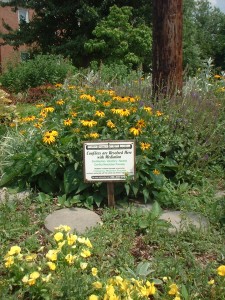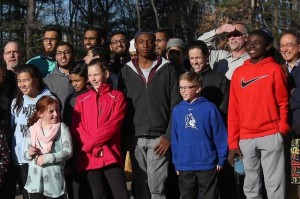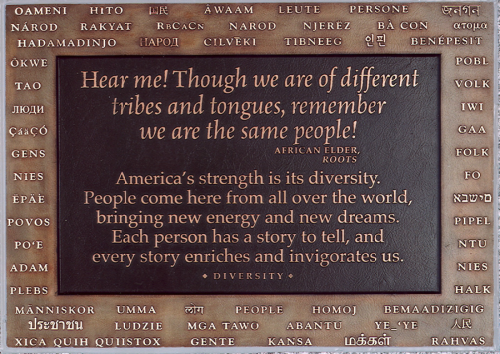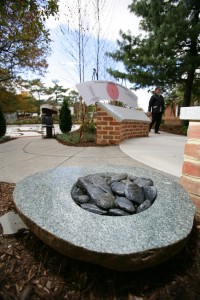Each month in our Nature Sacred blog we share insight from leaders and ideas advancing what it means to have sacred, open green spaces in our cities. This December we examine the concept of “civic sacred”.
Public discussion about the experiences and emotions of religion and the Sacred may be challenging. Although Civic sacred is not limited to traditional places of worship and consecrated sites, popular interpretations of Sacred are connected to religion and theology, and are interlaced with faith-based organizations. There can be assumptions of exclusion or possession, as expressed in dictionary definitions of sacred: Dedicated, set apart, exclusively appropriated to some person or some special purpose. This month, many religious organizations across the U.S. are re-creating sacred space through community greening activities designed to bring those with diverse beliefs together.
[Featured Image: A plaque calls for diversity in a Baltimore ‘Sacred Writings Garden’. Credit: Friends of NIPG]
Baltimore, Maryland
![IMG_0970[1]](/wp-content/uploads/2015/12/IMG_09701.jpg) The Northeast Interfaith Peace Garden on the grounds of St. Anthony of Padua Church is open to all who desire a place
The Northeast Interfaith Peace Garden on the grounds of St. Anthony of Padua Church is open to all who desire a place  to heal and connect. Since 2000, the garden life and design continues to grow and expand beyond the original plan. The peaceful space includes a walking labyrinth made of brick paving stones and a Sacred Writings Garden. A vegetable patch and rain garden are new additions (in collaboration with Interfaith Partners for the Chesapeake). The former convent on site houses asylum seekers who help maintain the community gardens. The Sacred Writings Garden connects five small gardens individually dedicated to Christianity, Judaism, Islam, the Earth religions, and the Eastern religions. Each contain a plaque of appropriate sacred scripture and flowers, herbs, and shrubs cited in each scripture.
to heal and connect. Since 2000, the garden life and design continues to grow and expand beyond the original plan. The peaceful space includes a walking labyrinth made of brick paving stones and a Sacred Writings Garden. A vegetable patch and rain garden are new additions (in collaboration with Interfaith Partners for the Chesapeake). The former convent on site houses asylum seekers who help maintain the community gardens. The Sacred Writings Garden connects five small gardens individually dedicated to Christianity, Judaism, Islam, the Earth religions, and the Eastern religions. Each contain a plaque of appropriate sacred scripture and flowers, herbs, and shrubs cited in each scripture.
Omaha, Nebraska
In Omaha, Nebraska The Tri-Faith Initiative is leading the country in efforts to create real dialogue and connection. The Initiative is creating a shared religious space housing a mosque, a church and a synagogue. The synagogue is a decades-old established community who hope to bring other faith communities together by 2018.
University of Maryland
The University of Maryland College Park’s interfaith garden and labyrinth rests in the heart of campus. Completed in 2010, its concept originated in student response to national tragedies. As a way to try to process and understand loss after 9-11 and campus shootings, students unconsciously gravitated to the spot, a soon-to-be sacred space in nature that was adjacent to the Veterans Memorial. The Garden of Reflection and Remembrance now serves multiple university populations in diverse ways. It promotes the spirit of reflection, provides opportunities for healing, and connects multiple groups and cultures within the large campus population.
Natick, Massachusetts

A Massachusetts Presbyterian church put out an open call to congregations of all faiths to help build a community garden. The Presbyterian pastor says he knew that it “wasn’t just about fresh vegetables – it was about fostering interfaith camaraderie.” Members of Temple Israel of Natick, the Islamic Society of Framingham and St. Paul’s Episcopal Church in Natick, as well as the local Veterans group, brought together more than 50 people to prepare garden boxes in the community space.
Spaces with community gardens, trees, and benches provide an opportunity for intentional and meaningful encounters with nature and with others. As the United States and the world struggle to understand the role of religion in our communities, green spaces provide a common ground for many to gather and connect.


